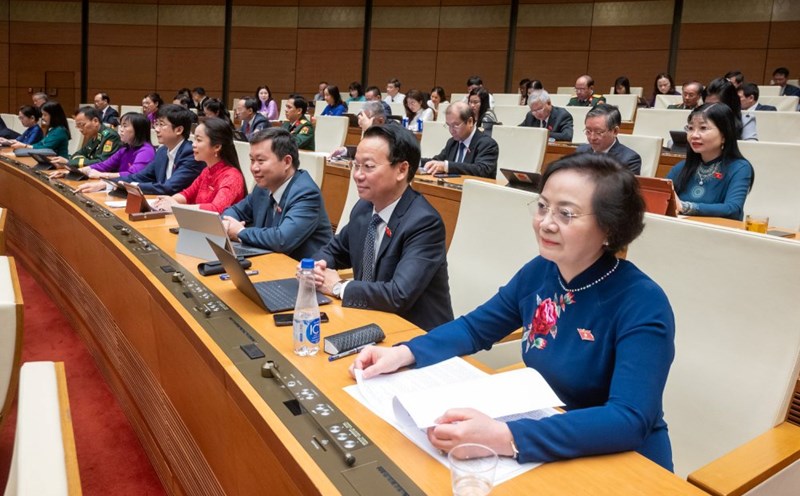On the morning of June 27, the Hanoi People's Council passed a Resolution approving the investment policy for the environmental improvement and waste incineration project at the Nam Son solid waste treatment complex (Soc Son district). The project has a total investment of more than VND 7,500 billion, equivalent to about 310 million USD, not using State budget capital.
According to the submission of the Hanoi People's Committee, the project aims to treat daily household waste, old waste buried at Nam Son landfill and sludge drained with burning technology, while taking advantage of heat to generate electricity. The plant aims to treat a total capacity of 2,400 tons/day, of which in the period of 2030-2040, 1,500 tons/day of domestic waste and 750 tons/day of buried waste will be treated. After 2040, the entire capacity of 2,250 tons/day will be for domestic waste.
The project also includes a mud drying system with a capacity of 600 tons/day, with 150 tons of dry mud (about 40%) per day being put into the copper incinerator to treat solid waste. The power generation capacity is expected to reach about 60MW ( lighting capacity).
The project is proposed to be implemented by a consortium of investors including SUS Shanghai Environmental Joint Stock Company and SUS Hai Nam Environmental Investment Company Limited (China) and Green Energy Environmental Investment Joint Stock Company (Vietnam). The plant is expected to be tested from the second quarter to the third quarter of 2029 and officially operated from the fourth quarter of 2029.
According to the Hanoi People's Council Urban Committee, the construction of a waste-to-energy plant to treat new waste, old waste and sludge is very urgent, helping to improve waste treatment efficiency, improve the environment in Soc Son area - which is suffering from serious pollution, especially odor pollution affecting people's lives.
The project is not only of environmental significance but also brings socio-economic efficiency, creating conditions to attract investment, contributing to local economic development. At the same time, when the plant comes into operation, the scale of the Soc Son Waste Treatment Complex will not need to expand phase 3, helping to save urban land funds.
Nam Son waste treatment complex has been in operation since 1999, the largest waste receiving place in the capital, treating thousands of tons of waste every day. For many years, the pollution problem here has been a hot spot, causing public outrage and frustration among people in affected areas.











